------
Return to grace and graces of the Century of Marie-Antoinette
With a most flattering presence, this original wall clock is adorned on its case made of gilded bronze with voluble motifs taken from the ornamental repertoire of the 18th century. Generously chiseled on an amati background, volutes, scrolls, crosses and leafy fleurons of grained acanthus embrace the violin-shaped shape of its body, punctuating the harmonious eurythmy arranged in clasps. Falls of campanulate bases, dark fluting of stylized asparagus adorn its sides; pearled and ovate, interlacing centered with cabochons stretch in friezes on the ramps of its pediment, its cornice, set the bezel of its white enameled dial indicating the hours, the minutes in Roman and Arabic numerals by two pierced hands in gilded bronze. Sumptuous garlands preciously adorned with rose buds, spring flowers embellish with their feminine touch the cartel as well as its wall console on which its leafy scroll base rests. Flanked by lanterns with flowery rosettes and laced on its entablature with a frieze of acanthus scrolls, it is worked on its corbel ending in a leafy bouquet with seeds of ornamental motifs with finery similar to those of the timepiece.
At the heart of these Louis XV foliage, three porcelain plaques in the spirit of the productions of the Manufacture de Sèvres - Bleu Céleste frame enhanced with small volutes, palms and florets varnished with fine gold, soft polychromy on reserve with powdered white background - inscribed in cartouches with noticeably scalloped lines, are set. Forming an axial pendant, two of them display the very pretty and fresh bust effigy of Archduchess Marie-Antoinette of Austria (1755-1793) coquettishly dressed in muslin, her face full of pleasure under her powdered wig adorned with pearls and the more conventional one, in court dress, of her princely and royal husband, Louis XVI (1754-1793). Placed under the dial of the Cartel, the third depicts two Cherubs playing tenderly with Doves within vaporous clouds strewn with roses. Freely inspired by the dreamlike porcelain compositions of Charles-Nicolas Dodin (1734-1804), this charming little painting sings with a suavity not devoid of ingenuity the graces born of the meeting and union (May 16, 1770) of the future royal couple.
Treated in the round, the three delightful children with plump forms surrounded by twirling draperies who, perched nimbly on the cornice ramps or wisely seated on the tree-shaped dice of the pediment, surround the summit of the clockwork ensemble, illustrate or even exalt this theme. One, with a sunken gaze, brandishes a rolled philactery in one hand, and in the other a feathered arrow - symbolizing the traits and effects of Love - taken from his quiver worn over his shoulder; the second, zealous, applies himself to blowing a horn announcing the solemn monarchical event. Finally, the third, laughing, is delighted by the playful presence of Doves - volatile Venusians associated with the feeling of love, with Hymen - frolicking ardently near him. Of a notable aesthetic and thematic homogeneity, this small clockwork monument of which we know for our part - as for the typology of the Wall-mounted Cartel - no other example perfectly illustrates the impetuous "historicist" breath which runs through, haunts the second half of the 19th century from the 1830s to the 1850s. Placed under the aegis of Marie-Antoinette, sovereign who, in her time, knew how to "conquer hearts", inspire respect and admiration, this Wall-mounted Cartel celebrating the dawn of the fires of a monarchical regime praised before the vicissitudes born of the Revolutionary turmoil for its art of ingenuous living, its refined luxury thus testifies to the return to grace of this historical period of the 18th century. And this, under the impetus of Empress Eugénie (1826-1920) who idolized the unfortunately controversial queen, acquired or commissioned at great expense period objects and furniture or neo-Louis XVI style. In 1867, during the Universal Exhibition, she presided over a retrospective exhibition dedicated to Marie-Antoinette in the Petit Trianon which left its mark and was to guide the decorative tastes of the Parisian elite of the time. Under the gold of the Second Empire, virtuoso upholsterers, renowned cabinetmakers, manufacturers of artistic bronze furnishings struggled to meet the new wishes of their customers to recreate the intimate and refined decor of yesteryear, to appropriate or reinvent their luxurious pieces of furniture, to evoke tularious figures, to combine motifs and materials characteristic of this rediscovered period. The wall light that we offer is the fruit of this creative impulse.
-----------------
Materials: Gilded bronze; polychrome decorated porcelain with Celestial Blue frames and fine gold highlights; enamel and glass.
Dimensions: Total height: 76 cm; -W.: 34 cm.
Quality Parisian work inspired by Louis XV-Louis XVI from the second half of the 19th century. Napoleon III period, circa 1860.
Good general condition.












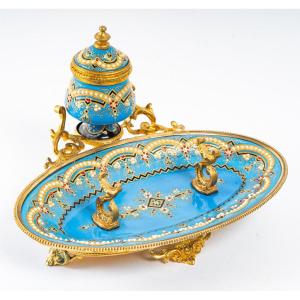





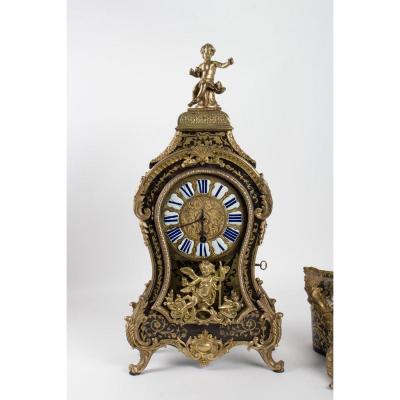

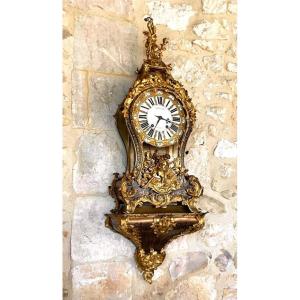

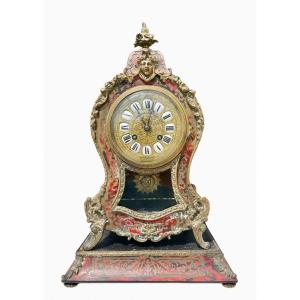
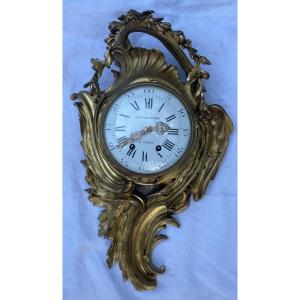



 Le Magazine de PROANTIC
Le Magazine de PROANTIC TRÉSORS Magazine
TRÉSORS Magazine Rivista Artiquariato
Rivista Artiquariato
